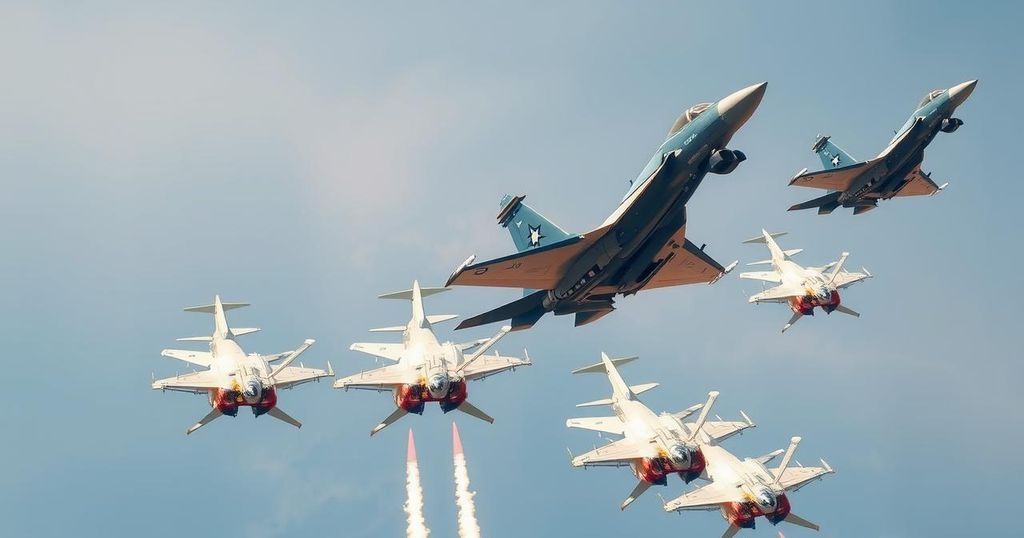Israel’s Air Force Establishes Unmatched Superiority Near Iran’s Borders

The Israeli Air Force has achieved unprecedented air superiority following Syria’s military collapse, allowing it to operate with little opposition up to Iran’s borders. This evolution is evidenced by successful operations against Iranian and Syrian defenses, establishing a new strategic advantage for Israel. Despite the tactical edge, the article highlights the limitations of air power in addressing comprehensive security threats.
Israel’s Air Force (IAF) has solidified its dominance in the skies, establishing significant air superiority almost to the Iranian border, particularly following Syria’s collapse and loss of military strength. The IAF, regarded as one of the premier air forces globally, has effectively conducted operations against adversaries such as Iranian and Syrian forces with minimal threat to its capabilities. This fact is underscored by a recent resurgence in military engagement following the Hamas attacks on October 7, 2023, which have spurred a comprehensive operational campaign.
The IAF has methodically dismantled key components of adversarial air defenses in Iran and Syria, allowing for unencumbered air operations. Reports indicate that the IAF has expanded its operational range, conducting missions that include penetrating Iraqi airspace and targeting Iranian military infrastructure. Recent operations have showcased Israel’s ability to strike deeply into enemy territory, including potential incursions into airspace that was previously more contested.
With Israel’s military engagement leading to the erosion of Syria’s air defense capabilities, analysts believe that the airspace through which Israel operates has become less challenging, potentially allowing Israeli aircraft to refuel closer to Iranian borders. The long-term implications of these developments suggest a shift in the strategic landscape of the region, with Israel positioned to carry out longer-range attacks than in the past.
However, while air power represents a significant military asset, it is not without limitations. Israeli operations in Gaza and against Iranian advancements in nuclear capabilities illustrate that aerial bombardments alone do not provide a comprehensive solution to the threats Israel faces. Still, the ongoing changes in regional power dynamics, particularly with diminishing Russian influence, indicate that Israel may have an extended window to operate with relative autonomy in the region.
The article primarily discusses the tactical advantages and operational scope of the Israeli Air Force in the Middle East following the collapse of Syria’s military regime. It highlights how Israel has leveraged this geopolitical shift to enhance its air capabilities, enabling its forces to strike with minimal opposition across the region. Furthermore, it contextualizes the implications of recent military engagements, offering insight into the new strategic environment created by these developments, particularly in relation to Iran and Syria.
In conclusion, the Israeli Air Force’s ascendancy in the region illustrates a significant shift in military dynamics, particularly in light of Syria’s weakened defenses and Israel’s ability to launch deep strikes against its adversaries. While air superiority provides Israel with a crucial edge in regional conflicts, it is essential to recognize the limitations of air power in addressing ground-based threats, particularly as geopolitical alliances evolve. The future landscape may see the reformation of Syrian defenses, thereby complicating Israel’s operational advantages, even as it enjoys a temporary period of dominance.
Original Source: www.businessinsider.com








